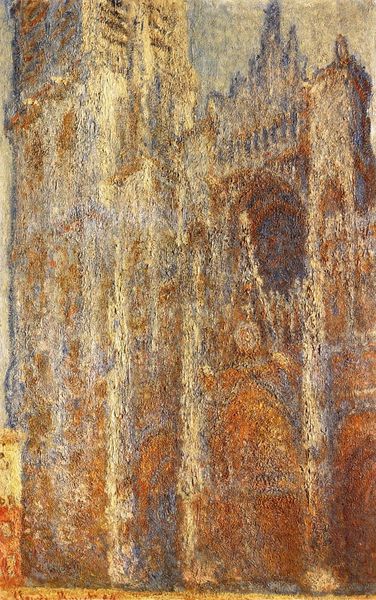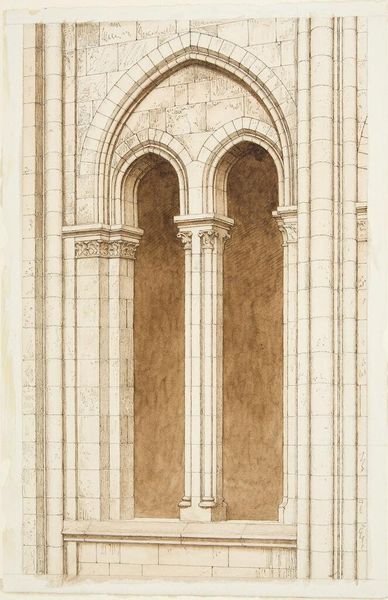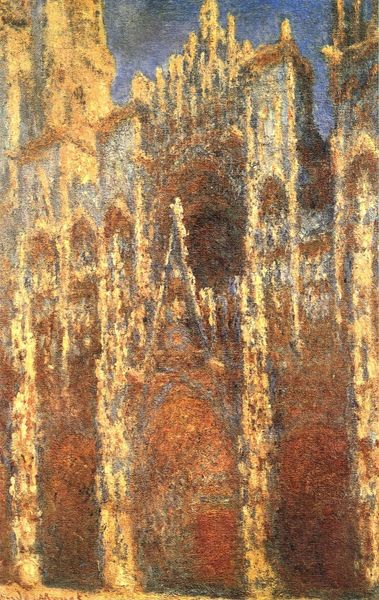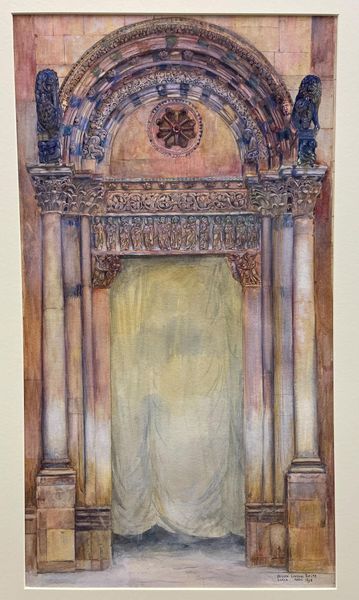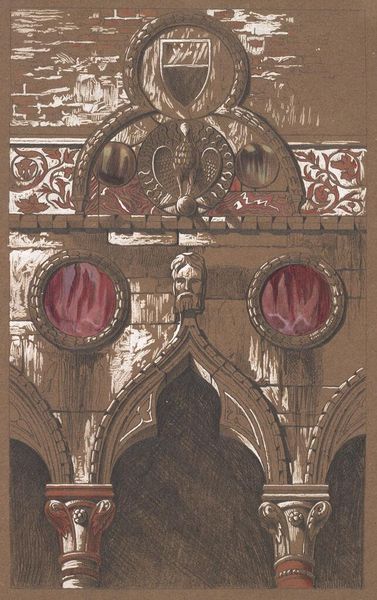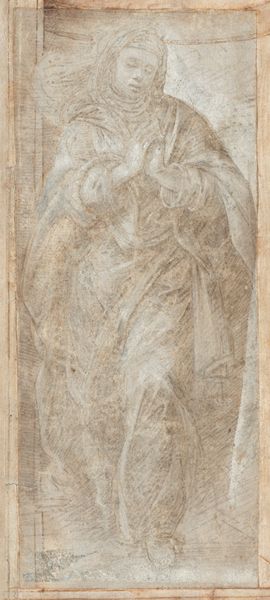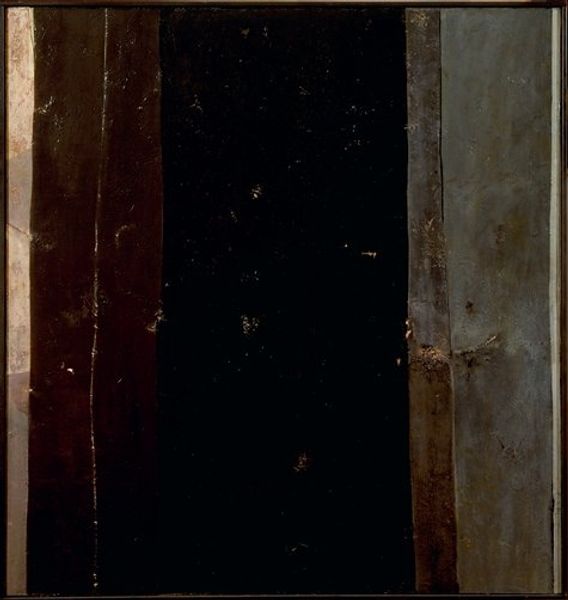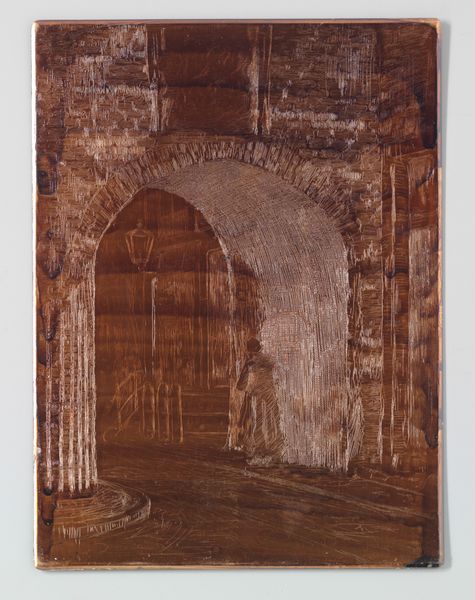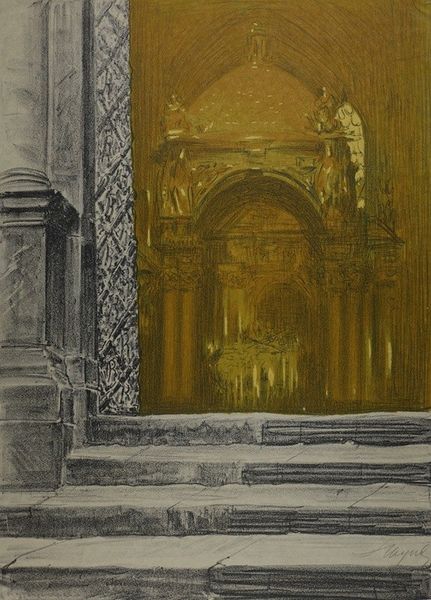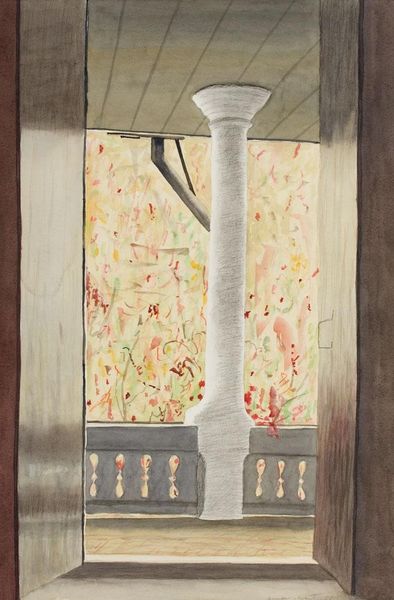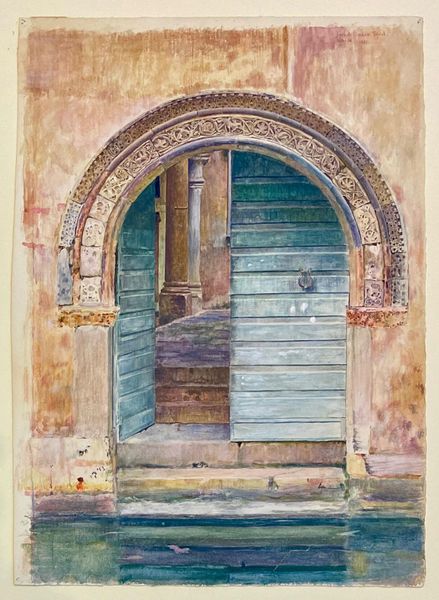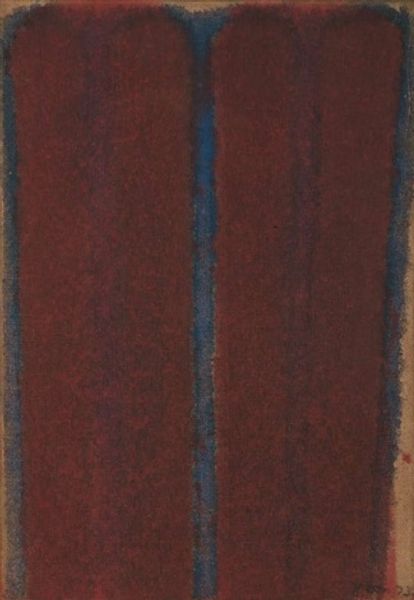
Copyright: Public domain
Curator: This watercolour from 1930 offers a view inside the Milan Cathedral, captured by Eleanor Fortescue-Brickdale. Editor: The first thing that strikes me is the hazy, almost ethereal quality of the light. It softens the immense scale of the interior. Curator: Indeed. Fortescue-Brickdale, while working within a broader British watercolor tradition, seems particularly interested in conveying the grandeur of ecclesiastical spaces. The early 20th century saw significant debates about the role of the church and its visual representation in modern society. Editor: And the columns, framed so prominently on either side, seem to reach towards an invisible apex. Their solidity anchors the composition while the diluted washes give a transient feel, wouldn't you agree? Curator: Yes, and I would argue the framing is as much about excluding as including. Note how it invites consideration not just of spatial dynamics but the positioning of worshippers. Are they subjects dwarfed by institution, or are they empowered agents finding solace and communion? The architecture almost demands social questions, doesn't it? Editor: It does. Looking again at how she plays with washes, notice how it impacts our sense of volume. It’s all subtly indicated. The eye does so much work to construct a coherent sense of space from such soft lines. I would not want it cropped. The space breathes because the watercolor wash spreads. Curator: That spreading wash, I think, enhances a pervasive atmosphere of spirituality. The artwork doesn't just picture a cathedral, it invokes an ambiance of reverence—a very specific tone of interwar European Christian revival. Editor: It makes you wonder about Fortescue-Brickdale’s own experience in that space. Whether it was purely an aesthetic fascination or held personal significance for her. Curator: Undoubtedly it had profound cultural relevance. Well, analyzing its composition and contemplating its potential contextual meanings seems time well spent, wouldn't you say? Editor: Absolutely, it's given me a richer sense of how color and brushwork impact the viewer's experience of an imposing space and allows space for different types of observation.
Comments
No comments
Be the first to comment and join the conversation on the ultimate creative platform.

